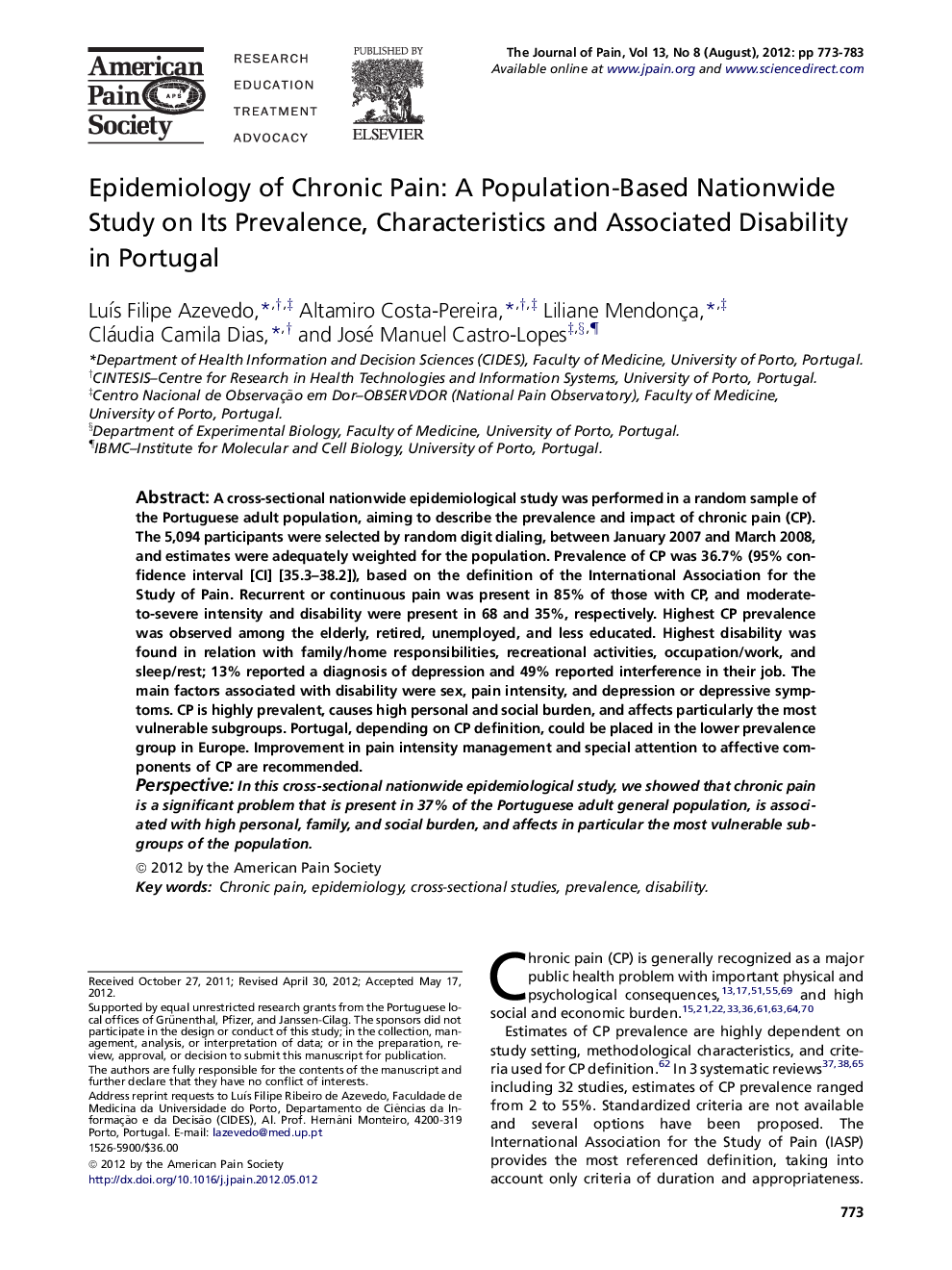| Article ID | Journal | Published Year | Pages | File Type |
|---|---|---|---|---|
| 2728838 | The Journal of Pain | 2012 | 11 Pages |
A cross-sectional nationwide epidemiological study was performed in a random sample of the Portuguese adult population, aiming to describe the prevalence and impact of chronic pain (CP). The 5,094 participants were selected by random digit dialing, between January 2007 and March 2008, and estimates were adequately weighted for the population. Prevalence of CP was 36.7% (95% confidence interval [CI] [35.3–38.2]), based on the definition of the International Association for the Study of Pain. Recurrent or continuous pain was present in 85% of those with CP, and moderate-to-severe intensity and disability were present in 68 and 35%, respectively. Highest CP prevalence was observed among the elderly, retired, unemployed, and less educated. Highest disability was found in relation with family/home responsibilities, recreational activities, occupation/work, and sleep/rest; 13% reported a diagnosis of depression and 49% reported interference in their job. The main factors associated with disability were sex, pain intensity, and depression or depressive symptoms. CP is highly prevalent, causes high personal and social burden, and affects particularly the most vulnerable subgroups. Portugal, depending on CP definition, could be placed in the lower prevalence group in Europe. Improvement in pain intensity management and special attention to affective components of CP are recommended.PerspectiveIn this cross-sectional nationwide epidemiological study, we showed that chronic pain is a significant problem that is present in 37% of the Portuguese adult general population, is associated with high personal, family, and social burden, and affects in particular the most vulnerable subgroups of the population.
